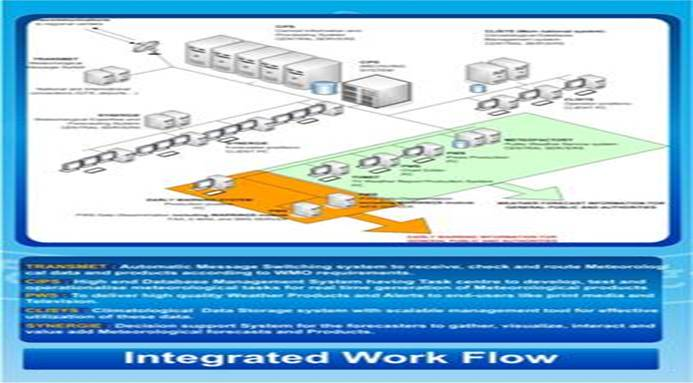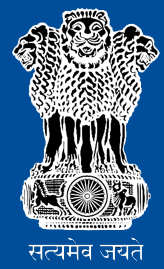Meteorological Telecommunication Services in IMD
Information System and Services Division (ISSD) of IMD provides support functions needed for meteorological data and processed weather products to the users, both national and international, round-the-clock on near real-time basis and is known internationally as Regional Telecommunication Hub (RTH) under the aegis of WMO.
The Meteorological Telecommunication in IMD consists of an integrated network of point-to-point & point to multipoint (MPLS VPN) links and meteorological centers within the country and the world for receiving data and relaying it selectively. It is mainly organized on a two level basis, namely i) The Meteorological Telecommunication Network (MTN) within the Global Telecommunication System (GTS) of World Weather Watch (WWW) program of World Meteorological Organization (WMO), and ii) The National Meteorological Telecommunication Network (NMTN).
In regard of Meteorological Telecommunication Networks on the GTS, New Delhi Telecommunication center is a designated Regional Telecommunication Hub (RTH) located on the Main Telecommunication Network (MTN). The MTN is the core network of GTS which connects three World Meteorological Centers (WMCs) and 14 other RTHs on the MTN. RTH New Delhi is also a National Meteorological Centre (NMC) for telecommunication purposes within the framework of GTS.
RTH New Delhi is directly connected with WMC Moscow, RTH Tokyo and RTH Cairo, RTH Beijing, RTH Toulouse, RTH Jeddah and WMC Melbourne located on the MTN; RTHs Bangkok and Tehran and NMCs Colombo, Dhaka, Karachi, Kathmandu, Male, Muscat and Yangon in the RMTNs.
WIS Portal GISC New Delhi
The WMO Information System (WIS) is a project designed for regional and global connectivity to collect and distribute the information meant for routine global dissemination, while serving as collection and distribution centres in their areas of responsibilities; providing entry points, through unified portals and comprehensive metadata catalogues, for any request for data held within the WIS.
WIS consists of two parallel parts: GTS and DAR (Discovery, Access and Retrieval). WMO continues its efforts to enhance and improve of GTS, while new DAR functionality is integrated into all WMO and related international programmes.
GTS has long served as the backbone of World Weather Watch Programme (WWWP) -a push-based distribution system for operationally critical data. In response to the growth of the computer industry and the rise of the Internet, which have enabled the use of meteorological information online in a variety of non-operational and interdisciplinary activities, WIS was conceived as a project to fill existing gaps and support the inter-community exchange of data and information.
At the center of DAR is a catalogue of the entire WIS. GISCs collect all metadata from WIS Centres in their areas of responsibility, and exchange metadata sets with one another.







